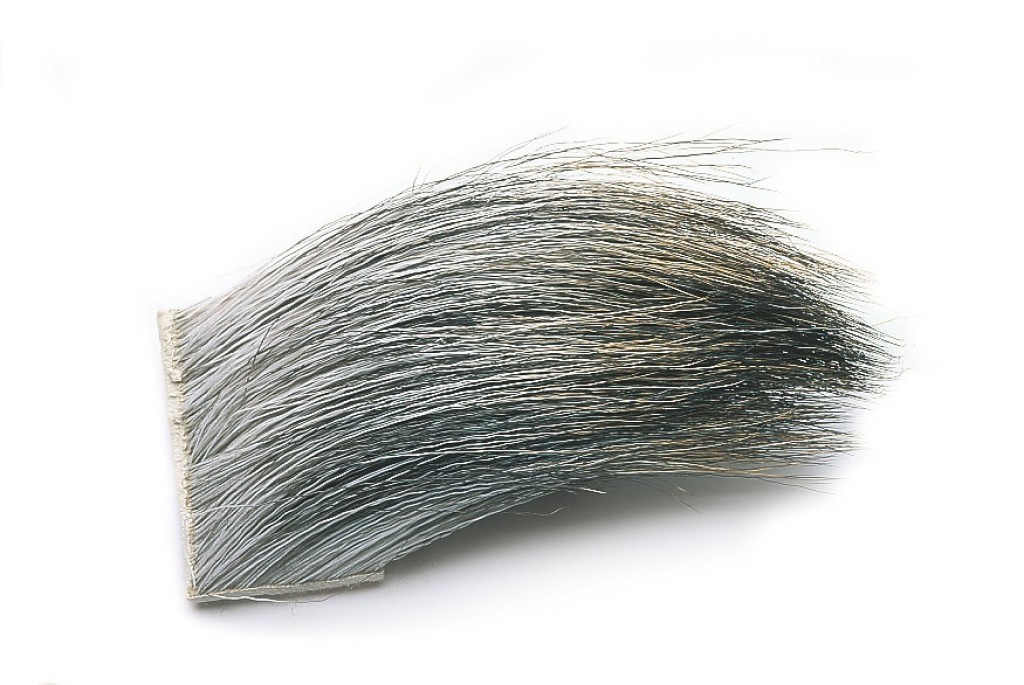Moose hair has been a valuable resource for centuries, utilized by indigenous communities and modern industries alike. Its unique properties make it highly sought after for various applications, from clothing to artistic crafts. In this article, we will explore the fascinating world of moose hair, diving deep into its characteristics, uses, and environmental implications.
Moose hair is not just a material; it represents centuries of cultural significance and practical applications. From the harsh climates of the northern hemisphere to the intricate designs of traditional crafts, moose hair plays a crucial role. Understanding its origins and uses can provide insight into its importance in both historical and contemporary contexts.
This article will guide you through everything you need to know about moose hair, including its properties, harvesting methods, and ethical considerations. Whether you're a craftsman, an environmentalist, or simply curious about this natural resource, this guide will offer valuable information to enhance your understanding.
Read also:Travis Tritt Family A Closer Look At The Country Music Legends Personal Life
Table of Contents
- Biography of Moose Hair
- Characteristics of Moose Hair
- Uses of Moose Hair
- Sustainability in Moose Hair Harvesting
- Historical Significance of Moose Hair
- Ethical Considerations
- Environmental Impact
- Alternatives to Moose Hair
- Crafting with Moose Hair
- The Future of Moose Hair
Biography of Moose Hair
Moose hair comes from the moose, one of the largest species of deer found primarily in the northern hemisphere. The hair is a byproduct of the moose's natural shedding process, which typically occurs during the spring and summer months. Indigenous communities have long relied on moose hair for its durability and warmth, incorporating it into clothing, blankets, and ceremonial items.
Biological Data
| Property | Details |
|---|---|
| Source | Moose (Alces alces) |
| Harvesting Season | Spring and Summer |
| Primary Uses | Clothing, Art, Ceremonial Items |
| Regions | North America, Europe, Asia |
Characteristics of Moose Hair
Moose hair is renowned for its distinctive characteristics, which make it suitable for a variety of uses. Here are some key features:
- Durability: Moose hair is incredibly strong and can withstand harsh weather conditions.
- Insulation: Its natural structure provides excellent insulation, keeping warmth in and cold out.
- Versatility: Moose hair can be dyed, woven, and crafted into intricate designs, making it a versatile material for artisans.
Uses of Moose Hair
Clothing and Textiles
Moose hair is commonly used in the production of clothing and textiles. Its insulating properties make it ideal for winter garments, such as coats, hats, and gloves. Additionally, its durability ensures that these items last for many years.
Art and Craft
Indigenous communities have long used moose hair in their artistic endeavors. Moose hair tufting, for example, is a traditional craft where the hair is wrapped around a core material to create intricate designs. These designs often hold cultural significance and are passed down through generations.
Sustainability in Moose Hair Harvesting
Sustainable harvesting practices are essential to ensure the continued availability of moose hair. This involves respecting the natural shedding cycle of the moose and avoiding overharvesting. Many indigenous communities have developed sustainable practices over centuries, ensuring that the moose population remains healthy and productive.
Historical Significance of Moose Hair
Throughout history, moose hair has played a vital role in the lives of indigenous peoples. It was used not only for practical purposes but also for ceremonial and spiritual reasons. The hair was often incorporated into regalia worn during important events, symbolizing strength, resilience, and connection to nature.
Read also:Nigel Hayes Married A Comprehensive Look At The Life And Journey Of The Nba Star
Ethical Considerations
When using moose hair, it is important to consider the ethical implications. This includes ensuring that the moose are treated humanely during the harvesting process and that their habitats are preserved. Ethical sourcing of moose hair involves working closely with indigenous communities and respecting their traditions and knowledge.
Environmental Impact
The environmental impact of moose hair harvesting is relatively low when sustainable practices are followed. However, overharvesting and habitat destruction can have detrimental effects on moose populations. It is crucial to balance the demand for moose hair with the need to protect the natural environment.
Alternatives to Moose Hair
For those seeking alternatives to moose hair, there are several options available. Synthetic fibers and plant-based materials can provide similar properties without the need for animal products. These alternatives are often more sustainable and ethical, making them a viable choice for environmentally conscious consumers.
Crafting with Moose Hair
Tools and Techniques
Crafting with moose hair requires specific tools and techniques to achieve the desired results. Artisans often use needles, thread, and other materials to create intricate designs. The process involves careful attention to detail and a deep understanding of the material's properties.
Projects and Ideas
There are countless projects and ideas for crafting with moose hair. From creating traditional regalia to designing modern accessories, the possibilities are endless. Some popular projects include moose hair tufting, embroidery, and weaving.
The Future of Moose Hair
The future of moose hair lies in balancing traditional practices with modern innovations. As awareness grows about the importance of sustainability and ethical sourcing, the demand for responsibly harvested moose hair is likely to increase. This presents an opportunity for artisans and industries to embrace eco-friendly practices while preserving cultural heritage.
Conclusion
Moose hair is a remarkable natural resource with a rich history and diverse applications. From its use in clothing and textiles to its role in traditional crafts, moose hair continues to be valued for its unique properties. By prioritizing sustainability and ethical considerations, we can ensure that this valuable material remains available for future generations.
We invite you to explore the world of moose hair further and consider how you can incorporate it into your projects or support sustainable practices. Share your thoughts in the comments below or explore other articles on our site for more insights into the fascinating world of natural materials.



